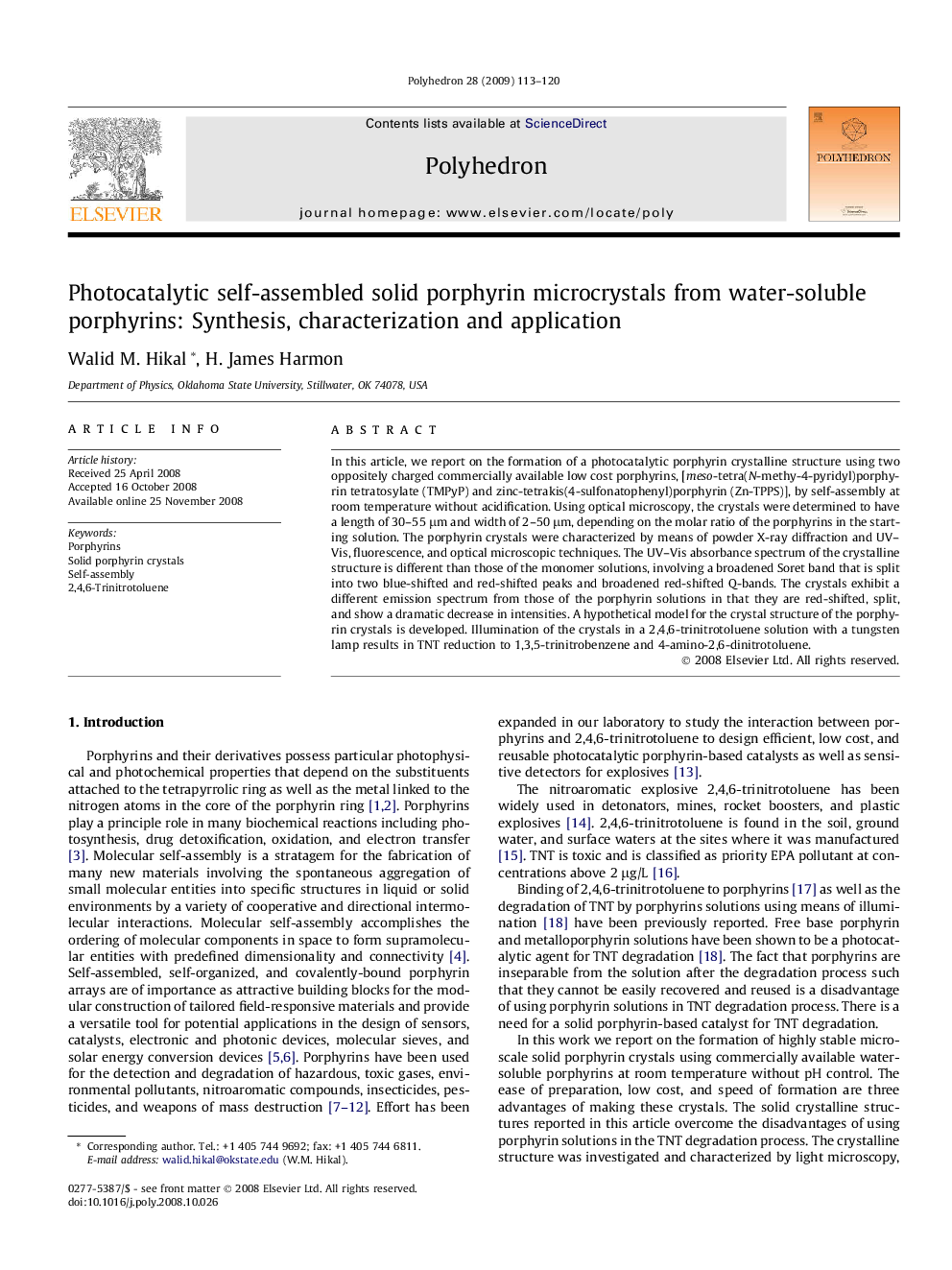| Article ID | Journal | Published Year | Pages | File Type |
|---|---|---|---|---|
| 1335166 | Polyhedron | 2009 | 8 Pages |
In this article, we report on the formation of a photocatalytic porphyrin crystalline structure using two oppositely charged commercially available low cost porphyrins, [meso-tetra(N-methy-4-pyridyl)porphyrin tetratosylate (TMPyP) and zinc-tetrakis(4-sulfonatophenyl)porphyrin (Zn-TPPS)], by self-assembly at room temperature without acidification. Using optical microscopy, the crystals were determined to have a length of 30–55 μm and width of 2–50 μm, depending on the molar ratio of the porphyrins in the starting solution. The porphyrin crystals were characterized by means of powder X-ray diffraction and UV–Vis, fluorescence, and optical microscopic techniques. The UV–Vis absorbance spectrum of the crystalline structure is different than those of the monomer solutions, involving a broadened Soret band that is split into two blue-shifted and red-shifted peaks and broadened red-shifted Q-bands. The crystals exhibit a different emission spectrum from those of the porphyrin solutions in that they are red-shifted, split, and show a dramatic decrease in intensities. A hypothetical model for the crystal structure of the porphyrin crystals is developed. Illumination of the crystals in a 2,4,6-trinitrotoluene solution with a tungsten lamp results in TNT reduction to 1,3,5-trinitrobenzene and 4-amino-2,6-dinitrotoluene.
Graphical abstractThe formation of highly stable multi-porphyrin micro-crystals using water-soluble porphyrins at room temperature is described. The structure is characterized by means of powder X-ray diffraction, UV-vis spectroscopy, fluorescence spectroscopy, and optical microscopy. The micro-crystals are shown to be a photocatalytic agent for the degradation of 2,4,6-trinitrotoluene.Figure optionsDownload full-size imageDownload as PowerPoint slide
